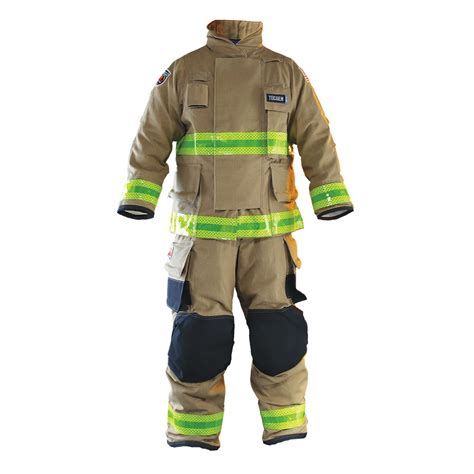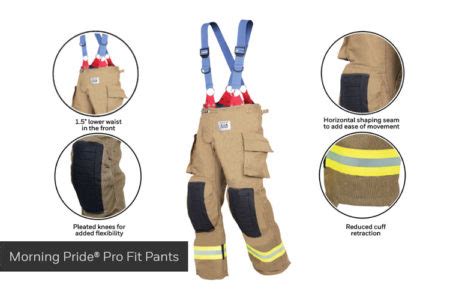Firefighting is a profession that requires a unique blend of bravery, skill, and equipment. Among the various types of gear that firefighters use, turnout gear is perhaps the most critical. Turnout gear, also known as bunker gear, is the protective clothing that firefighters wear to respond to emergency situations. It is designed to provide a high level of protection against heat, flames, and other hazards that firefighters may encounter on the job. In this article, we will delve into the world of turnout gear, exploring its history, components, and importance in the firefighting profession.
Key Points
- Turnout gear is a critical component of firefighter safety, providing protection against heat, flames, and other hazards.
- The primary components of turnout gear include a helmet, coat, pants, gloves, and boots.
- Modern turnout gear is made from advanced materials that provide improved thermal protection, durability, and comfort.
- The National Fire Protection Association (NFPA) sets standards for the design, testing, and certification of turnout gear.
- Regular maintenance and inspection of turnout gear are essential to ensure its effectiveness and longevity.
History of Turnout Gear

The concept of turnout gear dates back to the early days of firefighting, when firefighters wore little more than their regular clothing to respond to emergencies. As the profession evolved, so did the recognition of the need for protective gear. In the late 19th and early 20th centuries, firefighters began wearing helmets, coats, and pants made from canvas or cotton. These early versions of turnout gear provided some level of protection, but they were often heavy, cumbersome, and prone to wear and tear. It wasn’t until the mid-20th century that modern turnout gear began to take shape, with the introduction of synthetic materials like nylon and polyester.
Components of Turnout Gear
Today, turnout gear consists of several critical components, each designed to provide specific protection and functionality. The primary components of turnout gear include:
- Helmets: designed to protect the head and neck from impact, heat, and flames.
- Coats and pants: made from thick, heat-resistant materials that provide thermal protection and durability.
- Gloves: designed to protect the hands from heat, cuts, and abrasions, while also providing grip and dexterity.
- Boots: made from heavy-duty materials that provide protection from heat, flames, and rough terrain.
Each of these components is carefully designed and tested to ensure that it meets the rigorous standards set by the National Fire Protection Association (NFPA).
| Component | Material | Protection Level |
|---|---|---|
| Helmets | Thermoplastic or fiberglass | High-impact resistance |
| Coats and pants | Nomex, Kevlar, or similar synthetic materials | Thermal protection (up to 1000°F) |
| Gloves | Leather or synthetic materials | Heat resistance (up to 500°F) |
| Boots | Leather or rubber | Heat resistance (up to 500°F) |

Modern Advances in Turnout Gear

In recent years, there have been significant advances in the design and materials used in turnout gear. Modern turnout gear is made from advanced materials that provide improved thermal protection, durability, and comfort. For example, some turnout gear now features breathable moisture-wicking fabrics that help keep firefighters cool and dry, even in the most extreme conditions. Additionally, many modern helmets and face shields are designed with built-in communication systems, allowing firefighters to stay in touch with their teams and receive critical information in real-time.
Standards and Certification
The NFPA sets strict standards for the design, testing, and certification of turnout gear. These standards ensure that turnout gear meets minimum requirements for protection, durability, and performance. Fire departments and manufacturers must work together to ensure that all turnout gear meets these standards, and that firefighters are properly trained to use and maintain their gear.
What is the most important component of turnout gear?
+While all components of turnout gear are critical, the helmet is perhaps the most important. It provides protection for the head and neck, which are vulnerable to injury from impact, heat, and flames.
How often should turnout gear be inspected and maintained?
+Turnout gear should be inspected and maintained regularly, ideally after each use. This includes checking for damage, cleaning and decontaminating the gear, and ensuring that all components are functioning properly.
What are the benefits of modern turnout gear?
+Modern turnout gear provides improved thermal protection, durability, and comfort. It also features advanced materials and designs that help reduce the risk of injury and improve firefighter performance.
In conclusion, turnout gear is a critical component of firefighter safety, providing protection against the hazards of the job. By understanding the history, components, and importance of turnout gear, firefighters can better appreciate the importance of wearing the right gear to respond to emergencies. As the profession continues to evolve, it’s likely that we’ll see even more advances in turnout gear design and technology, further improving the safety and performance of firefighters around the world.
